
Module 3
Introduction
From the moment we get the ingredients to when we finish making the dish, we go through different steps that change the food until it’s ready to eat. Basic cooking techniques are like building blocks for fancier recipes. Before we dive into the details, let’s go over some simple cooking terms to understand how to talk about it and what steps to follow.
In this module, you will learn more technical cooking techniques, which you can practice as many times as necessary to become a great chef. In addition, you will be able to enjoy an explanatory video so that you can see in a practical way how these techniques should be made and what precautions should be considered. This module also includes a vocabulary sheet that will be very useful in the future.
Finally, there is a test that you will have to take to find out if you have learnt this lesson well or if, on the contrary, you need to revise it a little more.
Have fun with this module and enjoy the process!
Module 3
Whether you’re an aspiring chef or casual cook, understanding the many different cutting techniques can help you save time and be more efficient in the kitchen. We’ve compiled 7 different cutting techniques and explained how and when to use each method.

Cutting Techniques
Recommended Tool: Chef’s, paring, or serrated knife.
Used to cut meat, cheese, bread, tomatoes, cucumbers, squash, and eggplant. Position the knife at desired thickness of food and cut crosswise.
Recommended Tool: Chef’s knife.
To do a brunoise cut, the food must first be julienned then turned a quarter and diced again to create approximately 1/8-inch cubes. This cutting technique is ideal for carrots, onions, leeks, and celery, but can also be used with bell peppers and hard root vegetables like beets and turnips. Steer clear of this cut when preparing softer vegetables like green beans and cauliflower.
Recommended Tool: Chef’s or paring knife.
The chiffonade method is best for cutting herbs into long ribbons. Stack fresh basil or mint leaves, roll them up tight, and cut across hamburger style. This technique also works well for leafy greens like spinach, collards, and kale.
Recommended Tool: Chef’s knife.
Used for a variety of foods, chopping is a casual, imprecise term that simply means to roughly cut food into bite-sized pieces.
Recommended Tool: Chef’s knife.
Using a more precise method than chopping, cubed ingredients are cut to a uniform size (e.g. “1/2-inch cube”). This cut is used with many foods, from potatoes to meats to bread.
Recommended Tool: Chef’s knife.
Generally smaller than a standard cube, the dice cut also creates uniform squares for even cooking and a polished look. Dicing is often used to make a classic salsa or mirepoix (a mix of carrots, onions, and celery).
Recommended Tool: Chef’s or paring knife.
In julienne (or French) cut, the ingredient is cut into long, uniform strips like matchsticks. Julienne cut is often used for salad ingredients and green veggies, like cucumbers, bell peppers, and zucchini.
Units of Measurement
Volume and weight conversions are an important resource to have in the kitchen. When halving or doubling a recipe, making the correct conversions can make or break your final results.
Volume Conversions:

Study Sheets
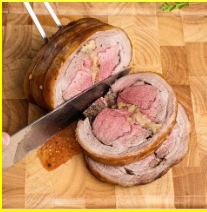
Description of the action
The saddle is from the loin area in the lumbar region and is made up of the loin either side of the animal. You can either buy it with the bone in or with the bone removed and rolled up into an easy-carve joint.
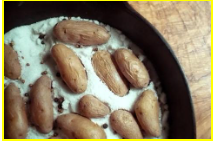 Description of the action
Description of the action
Salt roasting is achieved by surrounding a piece of meat with a thick layer of salt and baking it. As the salt encrusted meat bakes, the salt forms a tight seal around the meat. All the flavour and juices get trapped in the salt shell to create a cooking environment that is part roasting and part steaming.
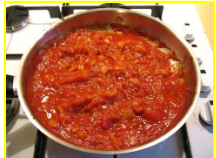
It is a technique that is done to certain vegetables (generally named with the tomato); it consists of removing the skin, removing the inner part (seeds, pulp), and chopping into cubes of 5mm on each side.

Description of the action
Food preservation includes processes that make food more resistant to microorganism growth and slow the oxidation of fats. This slows down the decomposition and rancidification process. Food preservation may also include processes that inhibit visual deterioration, such as the enzymatic browning reaction in apples after they are cut during food preparation
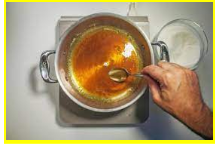
Description of the action
Candy is made by dissolving sugar in water or milk to form a syrup, which is boiled until it reaches the desired concentration or starts to caramelise. The type of candy depends on the ingredients and how long the mixture is boiled. Candy comes in a wide variety of textures, from soft and chewy to hard and brittle.
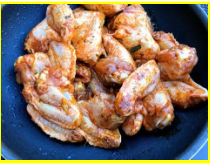
Marinating is the process of soaking foods in a seasoned, often acidic, liquid before cooking. The origin of the word alludes to the use of brine (aqua marina or sea water) in the pickling process, which led to the technique of adding flavour by immersion in liquid. The liquid in question, the marinade, can be either acidic (made with ingredients such as vinegar, lemon juice, or wine) or enzymatic (made with ingredients such as pineapple, papaya, yogurt, or ginger), or have a neutral pH.
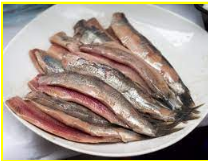
Description of the action
Sousing fish was a way of preserving it before refrigeration by saturating the fish with acid – vinegar in this case which, like salt, prevents the growth of microbes. Sugar is also added to create an agrodolce dish (sweet and sour). The fish is first fried in olive oil and then marinated in the vinegar base.
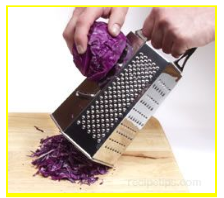
Description of the action
The process of transforming solid, firm food items into small pieces by rubbing the item against a grating instrument. A grater is a handheld metal device that contains numerous raised slots of varying sizes that cut food items into small pieces as the food is being rubbed across the surface of the grater. A food processor can also be used to grate foods and it may be preferred for food items that are difficult to grate on a manual grater.

Description of the action
A “gratin” is any dish that is topped with cheese or breadcrumbs mixed with butter, then heated in the oven or under the broiler until brown and crispy. The term “au gratin” or “gratinée” just refers to anything prepared in that manner.
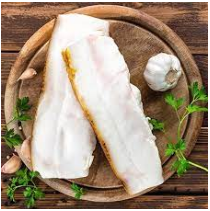
Description of the action
Lard is rendered animal fat that’s used for cooking. Although many bakers use butter or vegetable shortening in their pie crust, others swear by the rich flavour of lard. Lard is a white fat that comes from pigs. In some places, it’s not uncommon to spread lard on bread instead of butter, and many cooks appreciate its ability to get extremely hot without burning and its savoury flavour.
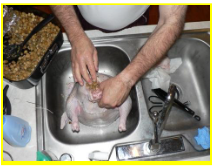
Description of the action
Stuffing, filling, or dressing is an edible mixture, often composed of herbs and a starch such as bread, used to fill a cavity in the preparation of another food item. Many foods may be stuffed, including poultry, seafood, and vegetables. As a cooking technique stuffing helps retain moisture, while the mixture itself serves to augment and absorb flavours during its preparation.
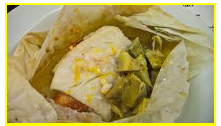
Description of the action
The classic technique of cooking en papillote is achieved by wrapping tender foods including fish, shellfish, or poultry, in a folded pouch of parchment paper with vegetables, herbs and spices. Although cooked in an oven this is a moist-heat method because the paper seals in hot vapours and steams the food.
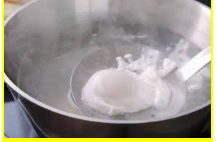
Description of the action
Poaching is a cooking technique that involves heating food submerged in a liquid, such as water, milk, stock, or wine. Poaching is differentiated from the other “moist heat” cooking methods, such as simmering and boiling, in that it uses a relatively lower temperature (about 70–80 °C (158–176 °F)).
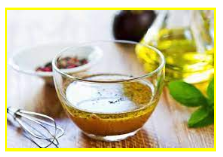
Description of the action
Vinaigrette is made by mixing an oil with a mild acid such as vinegar or lemon juice (citric acid). The mixture can be enhanced with salt, herbs and/or spices. It is used most as a salad dressing,[1] but can also be used as a marinade. Traditionally, a vinaigrette consists of 3 parts oil and 1 part vinegar mixed into a stable emulsion, but the term is also applied to mixtures with different proportions and to unstable emulsions which last only a short time before separating into layered oil and vinegar phases.
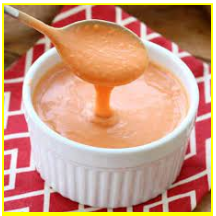
Description of the action
French dressing is made of oil, vinegar, sugar, and other flavourings, with the colouring derived from tomato and often paprika. It exists on a spectrum between Russian and Catalina dressing. French dressing is generally pale orange and creamy, while Catalina French dressing is bright red and less creamy.[1] On the Mississippi Gulf Coast, it is a common practice to dip pizza in Catalina French Dressing.

Funded by the European Union. Views and opinions expressed are however those of the author(s) only and do not necessarily reflect those of the European Union or the European Education and Culture Executive Agency (EACEA). Neither the European Union nor EACEA can be held responsible for them.Project Number – 2022-1-NO01-KA220-ADU-
